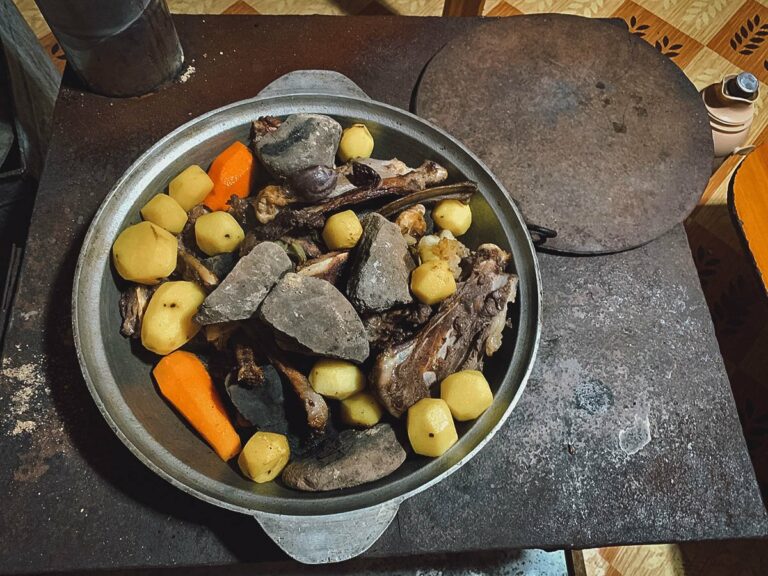Introduction to Mongolian cuisine
Mongolian cuisine is a reflection of the country’s nomadic way of life, with meat and dairy products playing a prominent role in the diet. The cuisine is characterized by hearty dishes that are meant to provide sustenance and warmth in the harsh Mongolian climate. Staples such as mutton, beef, and goat are often paired with vegetables, noodles, and dumplings to create savory and filling meals. Dairy products such as yogurt, cheese, and airag (fermented mare’s milk) are also commonly consumed, as are various types of tea and alcoholic beverages.
The influence of geography on Mongolian cuisine
Mongolia’s geography has had a significant impact on its culinary traditions. The country’s vast grasslands, mountains, and deserts have led to a reliance on meat and dairy products, as these are more readily available than crops. The nomadic lifestyle also means that food preservation techniques such as drying and fermenting are commonly used. Additionally, Mongolia’s history of trade and conquest has brought influences from neighboring countries such as China, Russia, and Kazakhstan, which are reflected in the cuisine.
Regional specialties in Inner Mongolia
Inner Mongolia, an autonomous region of China, has its own distinct culinary traditions. One specialty is the Mongolian hot pot, which features thinly sliced lamb or beef cooked in a simmering broth with various vegetables and spices. Another popular dish is the roast whole lamb, which is often served at special occasions such as weddings. Other regional specialties include sautéed lamb liver, Mongolian-style steamed buns, and milk tea made with butter and salt.
Regional specialties in Outer Mongolia
In Outer Mongolia, the most iconic dish is buuz, a type of steamed dumpling filled with minced meat and onion. Another popular dish is khorkhog, which consists of meat, potatoes, and carrots cooked in a metal container with hot stones. Other regional specialties include khuushuur, a fried dumpling filled with meat and vegetables, and boodog, which involves cooking meat (usually goat or marmot) inside the animal’s skin over an open fire.
Traditional dishes from the capital, Ulaanbaatar
Ulaanbaatar, the capital city of Mongolia, has its own set of traditional dishes. One of the most famous is tsuivan, a noodle dish made with meat, vegetables, and sometimes cheese. Another popular dish is bansh, a type of boiled dumpling filled with meat and served with a dipping sauce. Other local specialties include buuz made with camel meat, grilled meat skewers, and a variety of dairy-based desserts.
Mongolian cuisine’s global impact
In recent years, Mongolian cuisine has gained popularity around the world, particularly in East Asia and Russia. Mongolian-style hot pot and barbecue restaurants can be found in many major cities, and international food festivals often feature Mongolian cuisine. Additionally, Mongolian chefs have been competing in international culinary competitions and incorporating modern techniques and flavors into traditional dishes. As a result, Mongolian cuisine is no longer limited to its homeland, but has become a global culinary phenomenon.

